Chapter 1: Pan-Africanism – History Form Five Notes New Syllabus
The development of Pan-Africanism in Africa is directly linked to the history of the development of capitalism in Europe and the Americas. In this chapter, you will learn about the concept and origin of Pan-Africanism. You will also learn about the origin and development of Pan-Africanism from the 15,* the 200 to 21″ centuries. The competencies developed will enable you to appreciate the initiatives taken by the Africans towards setf-determination. You will also be able to respect and value African identity, dignity, and freedom.
The concept of Pan-Africanism
The term Pan-Africanism is derived from two words: ‘pan’, meaning all, and ‘Africa’, meaning the continent. Pan-Africanism is a belief that African people have much in common, including common identity, common culture, common destiny, and the shared history of colonialism and imperialism.
This movement originated in the Caribbean Islands, U.S.A. and other parts of the New World under the influence of different social, economic, cultural and political factors. The belief in Pan-Africanism is based on the uniqueness and spiritual unity of the people of African origin.
Although Pan-Africanism was started by the people of African origin in the New World, it became a worldwide movement that encouraged and strengthened the solidarity of all black people. The movement sought to bring all people of African origin together so that they could fight against racial discrimination, colonial domination, and the evils of imperialism.
Pan-Africanism was founded by Edward Wilmot Blyden (1832-1912) and later strengthened by Henry Sylvester Williams (1869-1911), both from the Caribbean Islands. The latter was a lawyer from Trinidad and he is remembered for convening the first Pan-African Conference in London in 1900.
The London Conference was attended by a few representatives from Africa and a big number of delegates from America and the Caribbean Islands, It was also attended by students such as William H.B. Du Bois, who later became a prominent scholar and famous Pan-Africanist.
In 1910, Du Bois and his fellow civil rights activists formed the National Association for the Advancement of Coloured People (NAACP), through which they advocated Pan-Africanism.
Objectives of Pan-Africanism
- Pan-Africanism sought to spread democracy all over the world and to lead Africans in their struggles to regain their freedom and dignity worldwide. As a result of the slavery and slave trade, Africans were scattered in many parts of the world and they faced economic, political, cultural and social discrimination.
- To overcome the problem, Africans resolved to form an organisation that would unite them and coordinate their efforts towards liberation and attaining racial equality.
- Pan-Africanism started as a movement geared to restore black identity and dignity within the capitalist system in the New World, but later it turned out to be a worldwide movement to protect black people against colonial oppression and imperialist domination.
- The major objective of Pan-Africanism was, therefore, to liberate Africans from imperialism. This would be achieved by organising global black solidarity.
- In Africa, Pan-Africanism focused on the liberation of African countries from colonial rule. This goal was made clear during the Manchester Conference of 1945, which called for African solidarity to end imperial domination.
Therefore, after the conference, the activities of Pan- Africanism shifted to Africa and its first major success was the independence of Gold Coast (Ghana) in 1957. Following Ghanaian independence, Accra was chosen as the headquarters of Pan- Africanism in 1957, meaning that Pan- African activities had effectively moved to Africa.
Importance of Pan-Africanism
Pan-Africanism is still relevant today because it integrates and connects the African people, especially as the world becomes more competitive, integrated, and interconnected. It creates a sense of togetherness among the people of African descent in a number of ways.
Firstly, Pan- Africanism promotes unity and solidarity among the people of African descent, regardless of the geographical location or national identity. By fostering a sense of interconnectedness and shared destiny, the Unity is able to overcome divisions created by colonialism and promote cooperation for common goals, such as social justice, economic development, and political liberation. It has fostered the view that the black people share a great deal among themselves more than just their skin colour.
Secondly, Pan-Africanism has been a driving force in the struggle against oppression, racism, and colonialism. Historically, Pan-Africanism has provided a framework for resistance movements, anti-colonial struggles, and civil rights movements across the African continent and among the African diaspora. By uniting diverse communities under a common cause, Pan-Africanism has empowered individuals and groups to challenge the systems of oppression and proclaim their rights.
Thirdly, Pan-Africanism celebrates the rich cultural heritage of Africa and its diaspora, promoting cultural exchange, appreciation, and preservation. It emphasises the importance of reclaiming African history, languages, traditions, ideals, and values which were often suppressed or distorted during the periods of enslavement and colonisation. Through cultural activism and education, Pan-Africanism fosters a sense of pride, identity, and belonging among the people of African descent. Uniting diverse communities under a common cause, Pan-Africanism has empowered individuals and groups to challenge the systems of oppression and proclaim their rights.
Fourthly, Pan-Africanism has aroused awareness of the need to research African history, culture, literature, religion, music, and art which act as tools to make Africa known to the outside world. For example, John Bruce researched and wrote about the foundation of human civilisation by showing the achievements reached by Africans, particularly in ancient Egypt and Ethiopia.
Fifthly, Pan-Africanism presents a sense of African commitment to fight against white supremacy and other forms of foreign domination on the African soil. A notable example was the effort to end Apartheid regime in South Africa.
Sixthly, Pan-Africanism promotes economic liberation and development within Africa and among the African diaspora. It advocates for fair trade, Pan-Africanism has aroused awareness of the need to research African history, culture, literature, religion, music, and art which act as tools to make Africa known to the outside world. For example, John Bruce researched and wrote about the foundation of human civilisation by showing the achievements reached by Africans, particularly in ancient Egypt and Ethiopia.
Fifthly, Pan-Africanism presents a sense of African commitment to fight against white supremacy and other forms of foreign domination on the African soil. A notable example was the effort to end Apartheid regime in South Africa. Sixthly, Pan-Africanism promotes economic liberation and development within Africa and among the African diaspora. It advocates for fair trade, resource sovereignty, and equitable distribution of wealth to address poverty, inequality, marginalisation and underdevelopment. By fostering economic cooperation, investment, and entrepreneurship, Pan-Africanism seeks to uplift communities, create opportunities, and reduce dependency on external powers. Home-grown initiatives, such as the establishment of African Continental Free Trade Area (AfCFTA) and the Regional Economic Communities (RECs), were taken to ensure economic liberation throughout the continent.
Lastly, Pan-Africanism advocates for political empowerment and self- determination for African nations and communities. It seeks to eliminate neo-colonial structures, promote democracy, and advance the interests of the African nations on the global stage by fostering political awareness, and proper leadership. Pan-Africanism also advocates for the creation of a just society worldwide that respects the sovereignty and rights of all nations.
Exercise 1.1
Explain the essence of the phrase “Africa is for the Africans.”
Slavery and Pan-Africanism from 15th to 19th centuries
The historical development of Pan- Africanism from the 15 century to the 19h centuries is linked to the development of slavery and trans-Atlantic slave trade in Africa, particularly on the West African coast. Slavery is a situation in which a person is legally owned and treated by another as an object of labour.
It is an ancient form of exploitation and oppression. Slaves were deprived of their rights as they were bought and sold like commodities. Sometimes, slave masters could kill their slaves without anyone questioning them. Slaves owned nothing, except their labour.
Slave trade was the process of capturing. selling, and buying human beings as commodities. The Trans-Atlantic-Slave Trade is the best example of how slave trade worked. The main participants in the slave trade on the African continent were Europeans, Arabs, and some African rulers especially chiefs. The Portuguese were the first Europeans to take slaves from West Africa, whereby Antao Goncalves was the first Portuguese sailor to buy Africans along the western coast of Africa in 1441. The trade gained momentum from the carly 16 century when many slaves were shipped to the New World, especially Brazil, the Caribbean Islands, and North America. During the voyages, slaves suffered humiliation and deprivation, and most of them died. As a result, there was a serious population decline in Africa. For example, it is estimated that the population of the Savannah region and the Hom of Africa declined by about 10 to 15 per cent, which was equivalent to over three million people.
Further estimates indicate that the population of Sub-Saharan Africa would have been nearly one hundred million instead of fifty million by 1850.
In essence, therefore, Pan-Africanism started as a reaction of the oppressed and exploited Africans, both on the African continent and in the diaspora, against slavery, slave trade, and racial segregation. It resulted from the denial of African identity and dignity by the white world.
The origins of the Trans-Atlantic Slave Trade
The Trans-Atlantic Slave Trade can be traced as far back as the 14″ century when Europe was disturbed by bubonic plague, famine and epidemic diseases.
These disasters killed many people, thereby causing severe shortages of labour in the agricultural sector. Some European empires started looking for slaves in Eastern Europe and Russia.
However, with the rise of Sultan Mohamed II of the Ottoman Empire (r. 1451-1481) whose regime disrupted the slave trade in Europe, European slave traders could no longer access sources of slaves within Europe. Africa was, therefore, the only continent that could best serve that purpose. As a result, Western Europeans turned to Africa for slaves.
Among other factors, the Trans- Atlantic Slave Trade flourished due to the development of marine technology, which transformed the navigation sector.
At the beginning of the 15 century, slave-trading activities were generally confined along the West African coast.
The Portuguese and African local chiefs acted as key players. As early as the 15 century, the Portuguese had established sugar plantations in Sao Tomé and Principe, which relied on the African slave labour obtained along the coast of West Africa. Slaves started to be transported from West Africa to America after the establishment of similar plantations in the Caribbean Islands, and silver mines in South America.
REASONS FOR THE EUROPEANS’ PREFERENCE FOR AFRICAN SLAVE LABOUR IN AMERICA
There were various reasons for the Europeans’ preference for African slave labour in America. The following are some of them:
(a) The American-Indians who had been initially used by European as labourers had lower immunity to tropical diseases, such as smallpox and malaria, compared to the Africans;
(b) The indentured labour from Europe proved to be unreliable, owing to its limited supply and high mobility. The indentured labourers worked on contract terms, meaning that they were free to leave their employers after the contracts had expired;
(c) American-Indians could escape from the slave masters because they were familiar with the environment, while African slaves could easily remain in the locality because they did not know much about the environment;
(d) African slaves were financially cheaper than European slaves or indentured labourers. The European-indentured labourers were to be paid at the end of their contracts, usually in the form of a piece of land or a precious metal (gold and silver). Moreover, European slaves were criminals who were serving their sentences and, therefore, they would be released at the end of their sentences, This was different from African slaves who were tied to their masters indefinitely;
(e) West Africa was nearer to America: hence, it was easy to transport African slaves across the Atlantic Ocean to America; and
(f) Most of the Indian-Americans were hunters and gatherers (foragers), hence, they were not experienced in working the land contrary to African slaves who were experienced cultivators and could tolerate long working hours in the fields.
Activity1.1
(a) Conduct library research to distinguish slavery from slave trade.
(b) How far was slavery profitable to Europeans?
(c) Share your findings with the rest of the class.
The rise of the Trans-Atlantic Slave Trade
The Trans-Atlantic Slave Trade started following the activities of the European merchants and geographers who came to Africa and America around the 15* century. The Italian sailor and explorer, Christopher Columbus, who was working for Queen Isabela of Spain, discovered America (sometimes called the New World) in 1492.
His discovery prompted the Europeans economic projects such as mines, plantations and trade in America, These projects spearheaded the development of mercantilism. The Portuguese established themselves in Brazil, the Spanish settled in various parts of South, Central, and North America, while the English, the Dutch, and the French settled in the Caribbean Islands and North America. European activities in these areas, mainly plantations and mining, demandedmassive labour power.
The Trans-Atlantic Slave Trade, which is also called the Triangular Trade or the Great Circuit, involved three continents, namely Africa, America, and Europe.
The items of trade from Africa included slaves, gold, ivory, timber, dye-hoods, gum, beeswax, animal skins, and spices. America supplied raw materials such as tobacco, cotton, indigo, and sugarcane to European industries. Europe provided managerial direction and manufactured goods. The major participants in this trade were African local chiefs, the Dutch, the British, the Portuguese, as well as the French.
In West Africa, slaves came from the areas stretching from the Gold Coast (Ghana) to Cameroon. Other slaves were obtained from as far south as Congo and Angola. Slaves were transported from the interior to the coastal centres or ports.
Among the famous ports were Axim, Elmina, Bissau, Christiansburg, Cape Castle, Whydah (Benin), Lagos, Bonny and Old Calabar. Figure 1.1 shows the interconnection of the Triangular Trade between Europe, Africa and the New World.
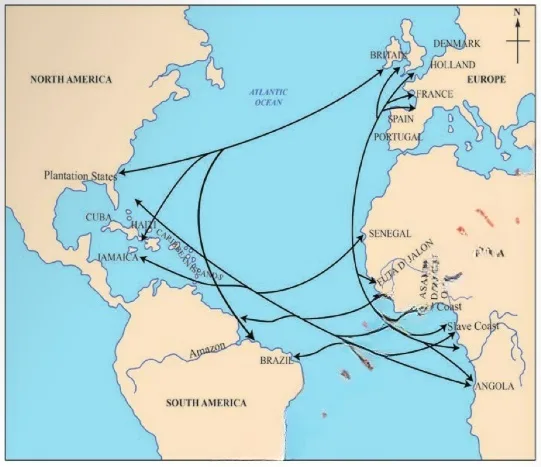
Exercise 1.2
The presence of the people of African origin in the New World is the legacy of the Trans-Atlantic slave trade. Explain.
The emergence of the African-Americans in America
The massive shipping of the African slaves to the New World began early in the 16th century and continued until the last quarter of the 19th century. On the Barbados Island, there were 11,200 white farmers owning 5,680 African slaves by 1645. Later in 1667, these small-scale white farmers were replaced by only 745 big capitalist farmers owning 8,203 African slaves.
European slave traders bought and shipped slaves to the Western Hemisphere. The number of enslaved people sold to the New World varied throughout the slave trade. As for the distribution of slaves from the regions of activity, certain areas produced more slaves than others.
Between 1650 and 1900, 10.2 million enslaved Africans arrived in the Americas from the following regions in the specified proportions: Senegambia (Senegal and Gambia) 4.8 percent, Upper Guinea (Guinea- Bissau, Guinea, and Sierra Leone) 4.1 per cent, Windward Coast (Liberia and Ivory Coast) 1.8 percent, Gold Coast (Ghana and the eastern part of Ivory Coast) 10.4 per cent, Bight of Benin (Togo, Benin, and Nigeria west of the Niger Delta) 20.2 per cent, Bight of Biafra (Nigeria east of the Niger Delta, Cameroon, Equatorial Guinea, and Gabon) 14.6 per cent, West-Central Africa (the Republic of Congo, the Democratic Republic of Congo, and Angola) 39.4 percent and South-Eastern Africa (Mozambique and Madagascar) 4.7 per cent.
In terms of ethnic composition, it is estimated that over 45 different ethnic groups were taken to the Americas during the Triangular Trade. According to slave documentation and modern genealogical studies, the ethnic groups which were enslaved were the BaKongo of the Democratic Republic of Congo, the Republic of Congo and Angola; the Mande of Upper Guinea; the Gbe speakers of Togo, Ghana, and Benin (Fon, Ewe, Adja, Mina); the Akan of Ghana and Ivory Coast; the Wolof of Senegal and the Gambia; the Igbo of south-eastern Nigeria; the Ambundu of Angola; the Yoruba of south-western Nigeria and Benin; the Tikar and Bamileke of Cameroon; and the Makua of Mozambique. Figure 1.2 shows a map of the major slave trading regions of Africa, from the 15th to the 19th centuries.
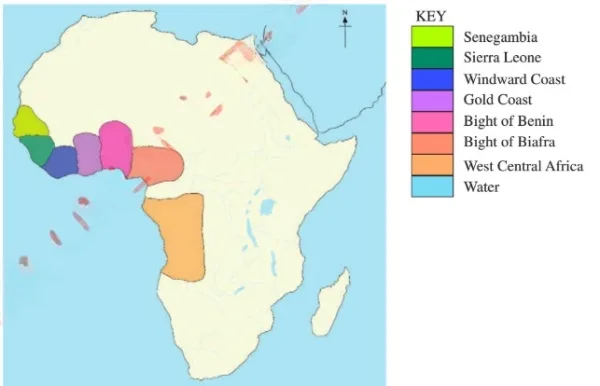
West-Central Africa was the largest source of African slaves, while Portuguese America (Brazil) was the largest destination. The African slaves were distributed to different parts of the New World as shown in Table 1.1.
African experience in the New World
Millions of Africans who were shipped to America starting from the early16th century faced various problems, especially after the Virginia Assembly of 1619. The Assembly passed a resolution that black slaves in the New World should be slaves forever. It means that they had no any civil rights, including the right to marry or the right to own property. The Virginia resolution made Africans face serious economic, social, and political problems, as explained in the following section.
Political problems
The African slaves in the New World faced political exclusion as they were denied the right to vote or to be voted for. Those slaves did not have the right to vote for people who would represent their interests. They were subjected to harsh conditions which limited their opportunity to obtain political rights. In order for one to vote, one had to pass a literacy test, which most African slaves failed, since they did not attend formal school and, therefore, they could not read and write. This trick was used to put African slaves in a disadvantaged position, the situation did not change even after the attainment of independence in 1776. It appeared, therefore, that the anti-colonial campaigns and the solidarity which accompanied the wars of independence did not mean equality between whites and blacks.
On 1st January 1863, President Abraham Lincoln initiated a movement to abolish slavery in the United States. From that point, the status and respect for the African-American people were somehow elevated. The assassination of President Abraham Lincoln on 14th April 1865 reversed the situation, leading to intensified political discrimination against African-Americans. They were not allowed to assemble or hold any meetings as a way of prohibiting them from organising collective action in the form of strikes, boycotts, and demonstrations.
Social problems
Having lost their language, customs, traditions, and homeland as a result of the slave trade, Africans in the diaspora were subjected to acts of enslavement, persecution and racial discrimination.
On the plantations and in the mines, for example, African slaves were treated badly and were oppressed as opposed to their European counterparts. Laws, which were passed in various states such as Virginia and Maryland were aimed at oppressing Africans socially.
African-Americans were also racially segregated in the provision of public services such as health, electricity, water, and transport. For example, American bus services separated African seats from European ones. This was evident in the second half of the 20th century. Whenever African-Americans violated this racial arrangement, they were arrested. For example, Rosa Park, a 42-year-old woman, was arrested after refusing to follow the bus driver’s order to leave a seat for the white person who had missed a seat in the first ten seats, which had been reserved for whites. She was arrested on 1st December 1955 in Montgomery, Alabama. Similar racial arrangements were evident in churches, where wooden benches for the African- Americans were separated from those of white Americans. As a result, the African-Americans decided to start their own churches.
African-Americans were segregated in schools. They were only allowed to join schools designed and reserved for them. These institutions were called “slaves’ schools.” For instance, in 1957, nine African-American students who had been selected to join Little Rock Central High School were chased away by the head of school, who claimed that they could cause violence and bloodshed if they were allowed to join the school.
Economic problems
The African-Americans were deprived of the right to own land. They had no right to access decent employment or any supervisory and administrative works.
All these were reserved for the whites. African-Americans were supposed to do manual work such as cleaning. They were not allowed to own any property, but white Americans had the right to own the major means of production such as land, companies and financial institutions, such as banks. As a consequence, the African-Americans were downgraded to low-paid jobs, and therefore, they were generally paid low wages.
Liberation struggles by African- Americans
The African-Americans resisted capitalist exploitation and this came to be known as Black American Nationalism. Their struggle started to be ignited by the Virginia Assembly of 1619 and was accelerated by the American war of independence between 1775 and 1783.
Therefore, to resist such injustices, they adopted different forms of struggle ranging from small-scale to large-scale struggles. Small-scale struggles included escape, whereby slaves escaped from their slave masters and hid in the forests, mountains and swampy areas. This form of struggle also involved demonstrations; destruction of equipment such as hoes, rakes and machines; burning plantations; killing slave masters; or committing suicide.
Riots, revolutions, and demonstrations constituted a significant category oflarge- scale struggles by African-Americans. Riots against slavery happened in the USA and other parts of the New World.
In Brazil, for instance, slaves revolted against their slave masters and ended up establishing their own African state called the Palmares. Palmers lasted for one hundred years before the Portuguese slave masters destroyed it. Similarly, in Jamaica, frequent slave revolts were reported during the 18th and 19th centuries.
The revolts taught the European slave masters that slavery was increasingly becoming unsafe and expensive to maintain. For instance, a group of slaves known as the Maroons revolted against their British masters. They established and maintained their own self-governing farming communities before they were defeated by their masters. However, the biggest event in the form of a revolution happened in Haiti, where French slave masters owned sugarcane plantations.
In Haitian L’ouverture led his fellow slaves to revolt against the French masters in 1791. Many French slave masters were killed by the slaves. The frequent slave revolts in Haiti worried the French, so they organised navies to suppress them in 1803. Surprisingly, their navies were defeated by the angry slaves and consequently, the slaves established the independent republic of Haiti. The collective impact of such slave rebellions was that the government leaders and bankers in France and Britain gradually stopped supporting slavery and slave trade. This was a major achievement for the African slaves in the New World.
African-American intellectuals, activists and internationalcommunities spearheaded the struggle. Although Great Britain spearheaded the abolition of slave trade and consequently banned the trade in 1807, the shipment of African slaves to Brazil and Cuba continued until the 1860s. Thus, the movements to abolish the slave trade became part of African- American struggles in the United States of America. The anti-slavery movements were well intensified during the American civil wars, which began in 1861 and ended in 1865.
For the most part, the anti-slavery coalitions used non-violent means to liberate African-Americans from capitalist domination and exploitation. Such movements were supported by African-American leaders, activists, and intellectuals, including Frederick Douglass, Booker Taliaferro Washington, Marcus Aurelius Garvey, Martin Luther King Junior, Malcom Little Early (popularly known as Malcom X), Edward Wilmot Blyden and William Du Bois, whose contributions are explained below.
Frederick Douglass (1818-1895)
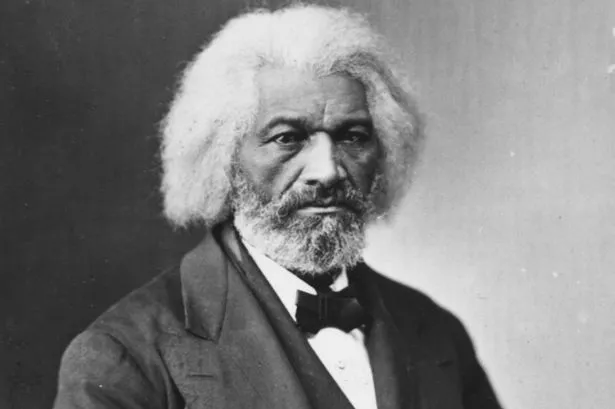 Douglass was an African-American social reformer, abolitionist, orator, writer, and statesman. He was born as a slave and worked in Maryland as a slave, before he escaped and became a national leader of the abolitionist movement in Massachusetts and New York.
Douglass was an African-American social reformer, abolitionist, orator, writer, and statesman. He was born as a slave and worked in Maryland as a slave, before he escaped and became a national leader of the abolitionist movement in Massachusetts and New York.
Douglass concentrated his efforts on programmes meant for complete emancipation of African-Americans.
He was an integrationist who wanted African-Americans to be integrated into American society politically and economically.
After the abolition of slavery in the USA, Douglass struggled for political equality between the people of African origin and others.
His efforts bore some fruits as a few African-Americans got voting rights and others were elected into various state legislatures. For example, some African- Americans were elected as congressmen and one was promoted to the position of a senator.
However, this political success was only short-lived because in the 1880s and 1890s the whites in the southern states became so reactionary.
Booker Taliaferro Washington (1856- 1915)
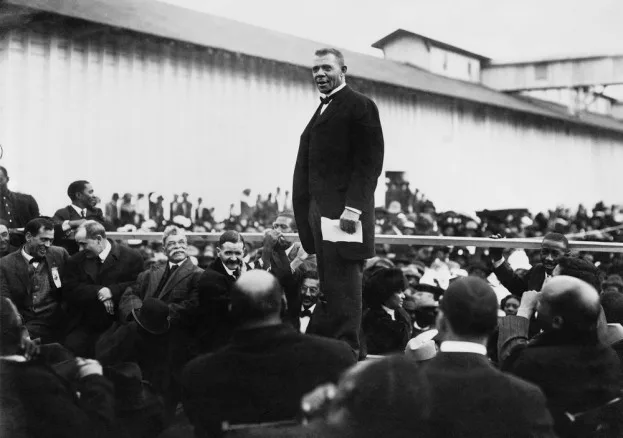
Washington was an African-American educator, author, and orator. He was born into slavery and rose to become a leading African intellectual of the 19th century.
He was the founder of the Tuskegee Normal and Industrial Institute (now the Tuskegee University) in 1881 and the National Negro Business League, two years later.
He also served as adviser to several presidents of the United States.
Between 1890 and 1915, Washington was the most prominent leader in the African- American community.
Originally, he was a slave in the south, but later fought for his education to the point of becoming an activist, fighting for the rights of African-Americans.
He advocated for economic progress through the attainment of industrial vocational skills.
He was convinced that the black people had first of all to acquire economic power as a prelude to acquiring political rights.
He also believed that this could be achieved through the provision of industrial education.
William Edward Burghardt Du Bois (1868-1963)

Du Bois was a prominent African- American sociologist, historian, author, and editor.
He was an important leader of the African-American struggles in the USA during the first half of the 20th century.
He wanted African-Americans to attain political power, which was the first step towards the integration into American society.
He formed an organisation known as the National Association for the Advancement of the Coloured People.
He wanted African- Americans to struggle for their civil rights and to be part and parcel of American society.
He was an integrationist who wanted to use constitutional means to attain African-Americans’ civil rights.
Later, he was engaged in organising Pan-African Congresses, including the Manchester Conference of 1945.
His organisation was an elitist one and did not get mass support from the African- American community.
Marcus Mosiah Aurelius Garvey (1887-1940)
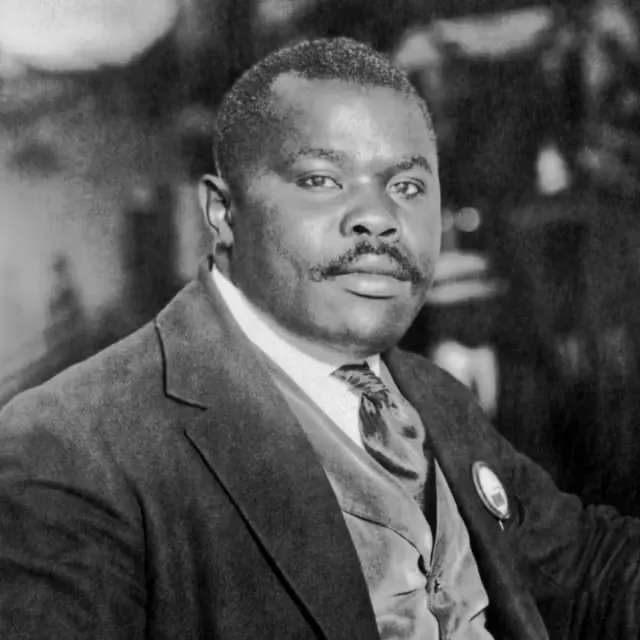
He was a Jamaican and a leader of the Pan-Africanist attended school in Jamaica until he was 15 when he left St. Ann Bay and went to Kingston, where he worked as an apprentice in a print shop.
He did not advocate for the integration of black people into American society but wished to build a separate culture and power for the black people worldwide.
His desire to establish a separate identity and culture for African-Americans explains his adoption of the slogan “Back to Africa Movement”
Garvey believed that Africa was black people’s original homeland and thus an ideal place for their emigration.
His organisation, the Universal Negro Improvement Association (UNIA), was formed in 1916 and lasted until 1927.
Like Du Bois, Marcus fought so that black people could achieve political and economic prospects.
He set up Negro economic enterprises, including Negro factories and a shipping line known as the Black Star Line for conducting trade between North America and West Africa.
Marcus Garvey was jailed in 1923 after he was found guilty of forgery. In 1925 he was released, after being pardoned by the President of the USA. He was deported to Jamaica in 1927.
Edward Wilmot Blyden (1832-1912)
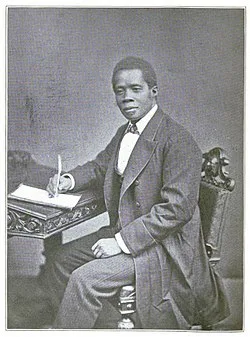
Blyden was born in St. Thomas, Virgin Island, in the Caribbeans.
He was a Liberian educator, writer, diplomat, and politician, who was primarily active in West Africa. Having felt the impact of racial discrimination, he joined the waves of black immigrants who migrated to Liberia in 1850.
He dignified African personality and condemned white superiority and the exploitation of black people.
He wanted the people of African origin to dismantle the white superiority complex by showing their ability to manage themselves.
He published on Pan-Africanism and campaigned for the Back-to-Africa Movement.
Apart from the elitist movements, the African-Americans also staged demonstrations. For example, in 1955, there were demonstrations in Montgomery, the capital city of the state of Alabama in the United States, to condemn racial segregation.
African-Americans started breaking the rules made by the white government. They violated the racial rules that prevented them from accessing the public services provided to the white people only, such as stores and restaurants.
Similarly, they protested against racial discrimination in public transport. Protests against racial discrimination in the American transport sector were sometimes referred to as transportation protests; they were common in the United States in the 1920s. Events involving protests against segregation in the transport system are widely documented in American history books.
During the 1850s, African- Americans were strictly forbidden to board buses which bore huge signs that read “Colored Persons Not Allowed.”
Furthermore, African-Americans used songs, poems, and slogans as techniques for raising and instilling consciousness among themselves. The slogans included “We shall overcome” by Martin Luther King, Jr. and “It is better to die than to live as slaves” by Frederick Douglass. Such slogans fostered and reinforced black solidarity.
American government took significant initiatives to end slavery and slave trade. On 22nd September 1862, the American government issued the preliminary Emancipation Proclamation. That was after the introduction of the Emancipation Proclamation or Emancipation Act by President Abraham Lincoln. The law demanded the abolition of slavery and slave trade in all American states.
The law declared slavery and slave trade illegal. The proclamation was formally signed and issued by President Lincoln on the 1s January 1863. However, the introduction of “Black Codes” and the formation of the Ku-Klux Klan terrorist groups during the presidency of Andrew Johnson from 1865 to 1869 prevented African-Americans from emancipating themselves from the institution of slavery, although the black people never gave up.
They began to devise new methods to achieve their civil rights and freedom. Such movements were organised under the name of Black Solidarity. The champions of Black Solidarity were Marcus Mosiah Garvey and Martin Luther King, Jr.
Exercise 1.3
Examine other large-scale struggles used by African-Americans to resist capitalist exploitation.
BLACK SOLIDARITY AND THE BACK- TO- AFRICA MOVEMENT
Black Solidarity refers to the spirit of cooperation and togetherness among the oppressed and exploited people of African origin in America. These people were united by common forms
of capitalist exploitation, and collective black identity was essential in the struggle against racial oppression. The philosophy of Black Solidarity led to the formation of such movements as the Back-to-Africa Movement as explained in the subsequent sections.
Back-to-Africa Movement
The Back-to-Africa Movement was African-Americans’ collective movement for liberating themselves from American oppression, discrimination, humiliation and exploitation. It encouraged them to go back to their original homeland, that is, Africa.
The emigration of African- Americans to Africa was considered a solution to the problems they were facing in the diaspora. The Back-to- Africa Movement was founded by Marcus Garvey in 1920 and it mobilised thousands of African-Americans who wished to go back to Africa. Garvey believed that the blacks in the New World could find a true home in Africa. To him, the duty of the people of African origin in the New World was to find ways to return to Africa, where they could work together with their fellow Africans and build a free and mighty nation.
However, such migrations started in the early 1800s, especially after the formation of the American Society for Colonising the Free People of Colour or American Colonisation Society (ACS) in 1816.
The first attempt to take slaves to Africa was made in 1820 when some ex-slaves were taken to Sierra Leone, but they died of tropical diseases. In 1847, the ACS founded the Republic of Liberia and many African-American ex- slaves emigrated there. The substantial number of African-Americans migrated to Liberia in the 1880s and 1890s.
OBJECTIVES OF THE BACK-TO-AFRICA MOVEMENT
The movement intended to promote a sense of cooperation among black people all over the world. The Back- to-Africa Movement believed that all the black people in the New World and Africa were one; as such, they should unite and fight for their rights.
The idea was that the Africans in the diaspora should support their fellow Africans to fight for independence. In order to build a sense of unity among Africans, Garvey established connections with some political leaders in Africa, including Abd el-Karim of Morocco, and created a parliament in the form of an international convention, where members from different parts of the world could discuss their common problems and strategies for overcoming them.
The Back-to-Africa Movement emphasised the need to utilise African resources for the benefit of the African people. Moreover, the movement sought to bring together all black people from the Caribbean Islands, America and Europe, who shared a common history, race and dignity. Garvey emphasised separate development between whites and blacks and said that such separation could only happen if Africans struggled for economic and political sovereignty.
The Back-to-Africa Movement sought to preserve the culture and beliefs of the Africans and people of African origin, who had suffered oppression in America. African culture was considered worthy and, as such, deserved to be preserved. Therefore, the Back-to- Africa Movement was thought to be the best way of protecting African culture.
The leaders of the movement worked hard to eradicate all forms of segregation that African people had been subjected to. In an effort to liberate the people from racial oppression, the leaders frequently called on African-Americans to unite for social change.
Exercise 1.4
Suggest different ways that Africans can use to value their identity and promote unity among themselves.
ACHIEVEMENTS OF THE BACK-TO-AFRICA MOVEMENT
The movement succeeded in repatriating some of the African-Americans who were willing to go back to Africa. They were transported by the Black Star Shipping Company, which belonged to Marcus Garvey. They settled in Liberia and Sierra Leone. They were given fertile land to cultivate and to establish new settlements.
The Back-to-Africa Movement inculcated in Africans a sense of unity and love through slogans like “Africa for Africans.” This made Africans feel that they came from the same ancestor, so they were morally bound to help each other in their struggle for equality. For example, through an international convention that was initiated by Marcus Garvey, it was possible to establish a spirit of brotherhood that assisted in promoting independent African nations.
Another important achievement of this movement is that it laid a foundation for the philosophy of Negritude, as reflected in Garvey’s idea of “pride no shame in black skin.” The movement influenced further movements of emancipation in Africa such as the Kimbangu Movement in the Belgian-Congo.
PROBLEMS WHICH FACED THE BACK-TO- AFRICA MOVEMENT
In 1923, Marcus Garvey was jailed for five years, but he was pardoned in 1925. Later in 1927, he was deported to Jamaica. Since Garvey was the initiator of the movement, his absence

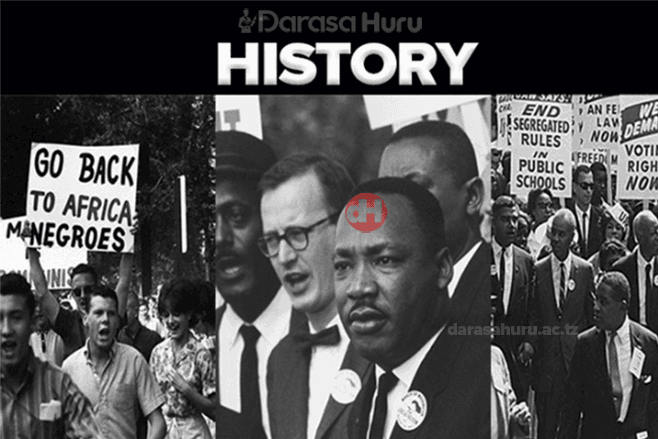
excelent